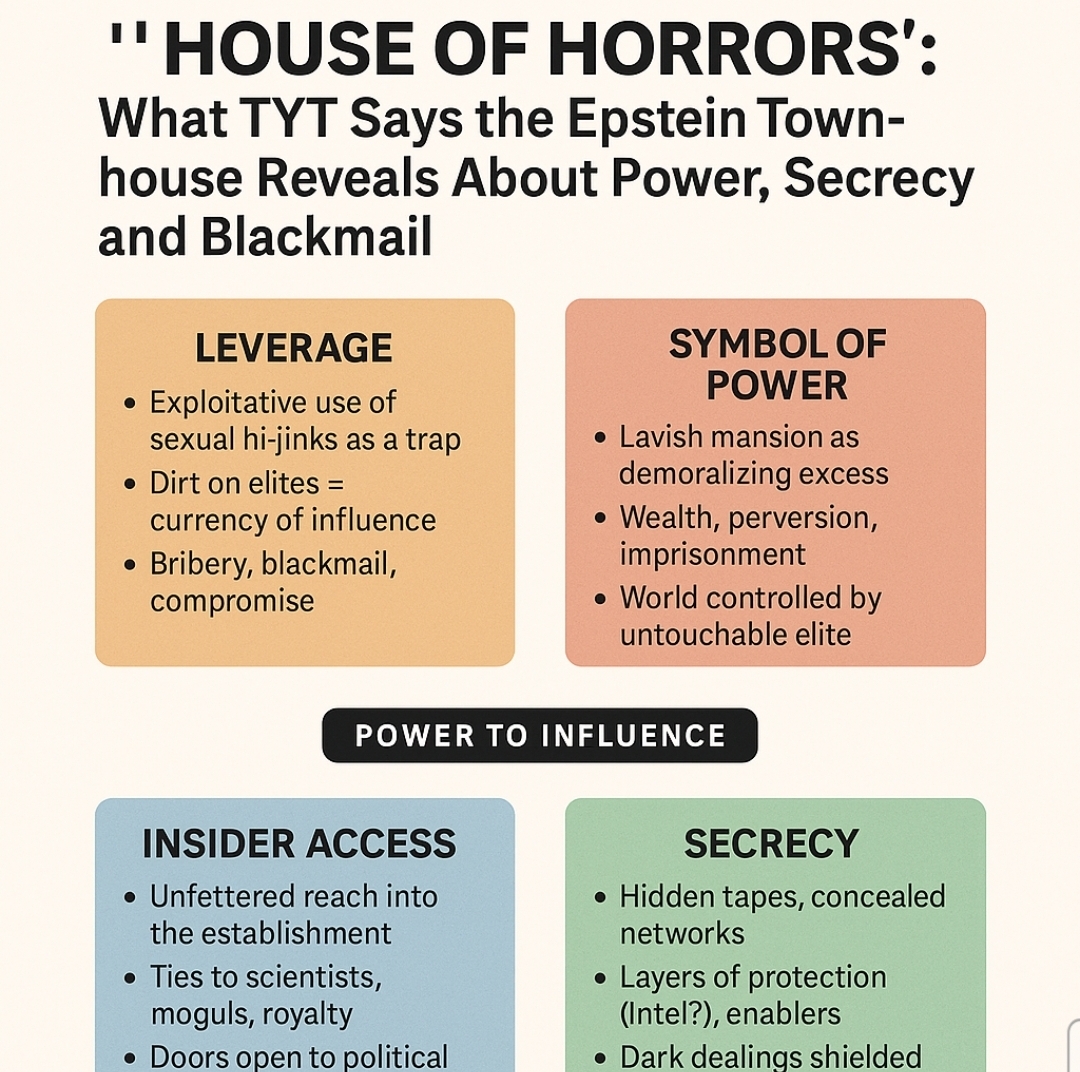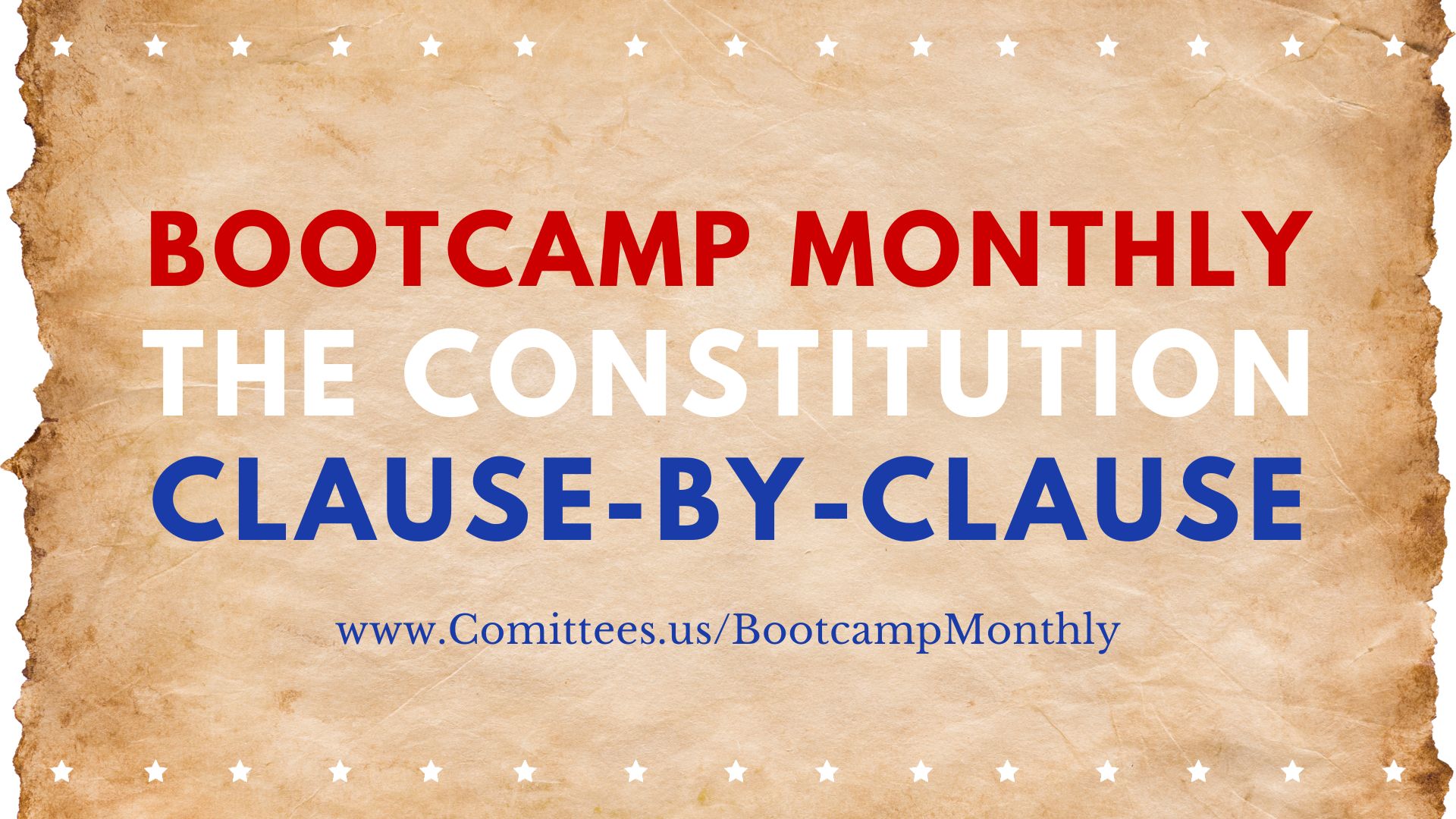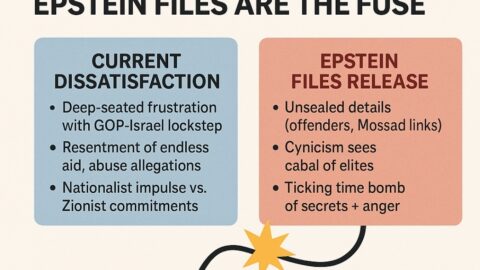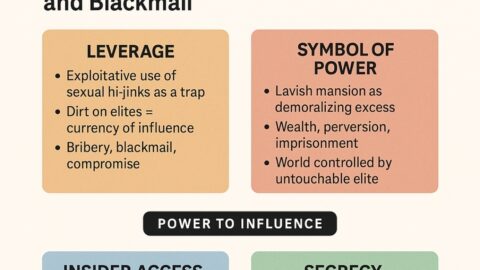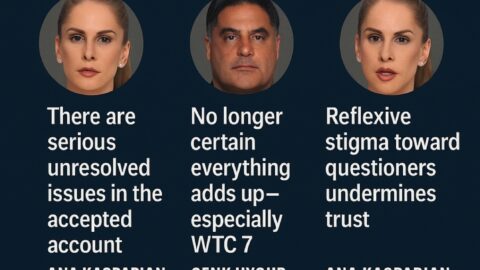This article summarizes commentary from The Young Turks (Cenk Uygur and Ana Kasparian) about Jeffrey Epstein’s Manhattan townhouse and surrounding controversies. It reports their claims and questions. Allegations are presented as TYT’s characterizations unless otherwise noted.
Few topics cut across party lines like the Epstein scandal. Whether you identify as conservative, liberal, or something else entirely, there is broad agreement on one point: people in positions of power should never be shielded from accountability by secrecy or corruption. The details emerging from Epstein’s townhouse—the so-called “House of Horrors”—tap into a deep, human instinct for justice. Most citizens, regardless of politics, recoil at the idea of elites exploiting the vulnerable while hiding behind wealth, status, and influence.
This is why the Epstein story matters far beyond partisan battles. It is not about left versus right, but about the health of our institutions and whether truth can survive when powerful networks are invested in burying it. Honest debate here should not be shut down by tribal reflexes, because the stakes reach into the core of what it means to live in a society built on law and conscience.
Disclaimer: What follows is not written to support one political party over another. The Epstein scandal is not a left-wing issue or a right-wing issue—it is a justice issue. Exposing corruption, secrecy, and blackmail protects everyone. Refusing to look away is not about ideology; it is about defending basic human dignity and ensuring that no one is above the law.
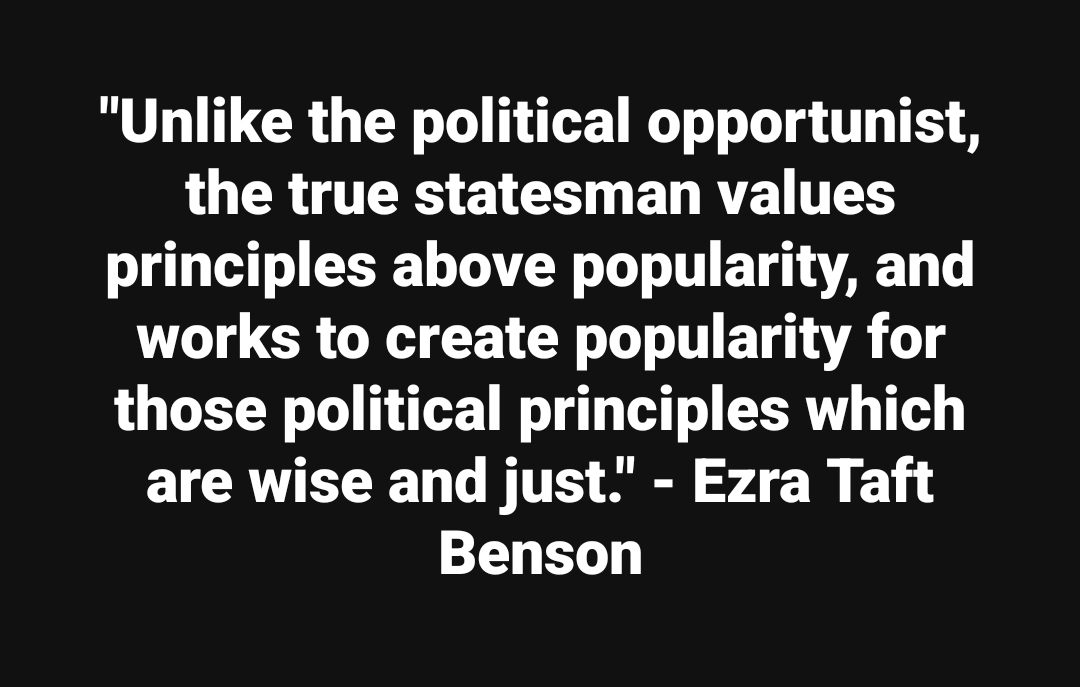
A Museum of Red Flags
In TYT’s telling, Jeffrey Epstein’s seven-story Upper East Side mansion wasn’t just lavish—it was a set piece broadcasting who he was and how he operated. They point to details described in reporting and court records: a first-edition Lolita displayed in the office; dozens of framed prosthetic eyeballs in the entry; a hanging bridal-gown sculpture clutching a rope dominating the atrium. TYT’s question is blunt: how did so many sophisticated guests—politicians, financiers, scientists—walk through those doorways and not register the message?
The show also cites media accounts of birthday letters preserved by Epstein—greetings from prominent figures praising his curiosity and social reach. One letter, attributed to former Israeli prime minister Ehud Barak and his wife, lauds Epstein as a “collector of people.” TYT lingers on the phrase and the decision to put such sentiments in writing.
Cameras, Leverage, and a Core Hypothesis
Several Epstein accusers have long said the townhouse was wired with hidden cameras. TYT builds a simple, if chilling, inference from that claim: nobody records illegal encounters with minors unless the footage is meant to control others. In their view, the mansion functioned as a blackmail machine—who it ultimately served remains the central question they say authorities haven’t answered.
TYT is careful to list possibilities rather than assert a single culprit: Epstein and Ghislaine Maxwell alone, an intelligence service (they mention CIA/Mossad as hypotheticals), or some combination. But they argue the pattern—hidden surveillance, high-profile guests, a trail of secrets—looks engineered for leverage.
The Barak–Israel Throughline (As Raised by TYT)
TYT references reports and photos of a chalkboard map of Israel signed by Barak in the townhouse, and a separate anecdote of Barak sketching a West Bank partition during a visit. They also note press accounts that Epstein invested in one of Barak’s ventures. TYT doesn’t claim definitive state involvement; rather, they stress the proximity, the optics, and the unanswered “why.”
Wexner: Money, Power, and Two Explanations
How Epstein acquired serious wealth remains a live question in the broader story. TYT highlights conflicting accounts about the townhouse’s transfer from billionaire Les Wexner (of L Brands/Victoria’s Secret)—from reports of a nominal $1 transfer to documentation indicating a multi-million-dollar sale—and stresses Epstein’s extraordinary authority in Wexnerworld, up to and including expansive power-of-attorney claims mentioned in prior coverage.
From that, TYT floats two plausible explanations:
- Personal compromise: Epstein had something on Wexner, extracted money and control, and used that model more broadly.
- Conduit for something larger: money and access flowing through Epstein as part of a structured blackmail ecosystem aligned with an intelligence objective.
They don’t pick a winner—but they dismiss as implausible the idea that an inexperienced, non-credentialed “money manager” somehow earned that level of trust from one of the savviest retail billionaires alive without leverage.
Steve Bannon’s “Missing” Tapes
According to TYT, Steve Bannon has said he recorded hours of interviews with Epstein in 2019 inside the mansion. The show notes reports that Epstein displayed framed photos of Bannon (including a mirror selfie) in at least two rooms. TYT’s challenge is straightforward: if Bannon is serious about transparency, release the tapes. In their view, a media figure would ordinarily publish any tape worth hearing. Silence invites the obvious question: what’s on them?
“No Clients,” Sealed Files, and the Trust Gap
TYT’s harshest criticism lands on the bipartisan handling of Epstein-related records. Years after Epstein’s death and Maxwell’s conviction, the public still confronts sealed documents, heavy redactions, and official rhetoric that suggests there were no “clients.” TYT calls that posture incredible on its face, especially if (as victims have alleged) the mansion was wired to capture compromising footage.
From their perspective, two things can be true at once:
- Every name deserves due process and protection against falsehoods.
- Sunlight is overdue, particularly where systemic exploitation and possible national-security compromise intersect.
The “Strategy Dinner,” Denials, and Maxwell Transcripts
TYT recounts reports (and counter-denials) about a planned White House meeting at Vice President JD Vance’s residence on whether to release Ghislaine Maxwell interview materials that the Justice Department has been digitizing and redacting. Vance’s office later called the reporting “pure fiction.” The whiplash—report, confirm elsewhere, deny—feeds TYT’s broader point: the public receives mixed signals instead of clear answers.
When former President Donald Trump publicly praised Deputy Attorney General Todd Blanche as “highly respected” and said it’s appropriate to ensure people “not involved” aren’t harmed by a release, TYT read that line as a tell: the primary objective might be shielding reputations rather than illuminating facts.
Centering Survivors—Not Politics
Two anonymous victims wrote to the court urging maximum transparency with necessary redactions to protect survivors—and condemning what they see as government focus on scrubbing powerful names instead of centering the harmed. They also voiced skepticism about Epstein’s cause of death. TYT amplifies their plea and adds a practical suggestion: if officials truly want credibility, include survivors in decisions about what to release and when.
Why This Still Matters
Beyond any single name, TYT argues, the unresolved core is institutional: a years-long pattern of stonewalling and selective secrecy that convinces ordinary people there’s one standard for the powerful and another for everyone else. That, they say, is how democracies hemorrhage trust.
What Would Accountability Look Like?
TYT sketches a simple path—none of it easy, all of it feasible:
- Publish what can be published, with careful redactions to protect victims and ongoing investigations.
- Spell out what cannot be released and why, on the record, with timelines.
- Commit to parity: no partisan carve-outs, no quiet favors.
- Invite survivors’ counsel into deliberations about release sequencing and privacy.
The Uncomfortable Through-Line
Whether you view Epstein primarily as a singular monster, a mobbed-up blackmailer, a convenient fixer for the rich, or something darker aligned with intelligence tradecraft, TYT’s point is the same: answers—not insinuations—restore legitimacy. If the evidence shows a straightforward story, show it. If it shows something worse, confront it. The longer institutions don’t, the more people will believe the “house of horrors” was not just a metaphor—but a map.
“House of Horrors”: TYT’s Point-by-Point Breakdown of the Epstein Manhattan Mansion Segment
What follows is a structured recap of what Cenk Uygur and Ana Kasparian said in the segment you provided. It reports their claims, questions, and inferences; it is not an endorsement of any allegation.
1) The Frame: “They all knew” and a government that “still claims there were no clients”
- TYT opens by calling Epstein’s Manhattan townhouse a “house of horrors.”
- Cenk/Ana assert that powerful visitors knew what Epstein was and did, yet the government narrative still behaves as if no client list exists.
2) The Setting: What NYT and others reportedly found in the townhouse
- Seven-story Upper East Side mansion (one of five Epstein properties).
- After Epstein’s 2009 Florida plea deal and release, the mansion functioned as hideaway + salon for “accomplished intellectuals, scientists, financiers.”
- Birthday letters: The show distinguishes a Wall Street Journal–reported Trump drawing for Epstein’s 50th from a different packet of letters (for his 63rd birthday) described by the NYT.
- Ehud Barak letter (former Israeli PM): praises Epstein’s curiosity and his habit of “collecting people.” TYT finds the phrasing ominous and lingers on why such sentiments were put in writing.
3) The Barak/Israel thread TYT highlights
- A chalkboard map of Israel with Barak’s signature was reportedly preserved in the home; a separate anecdote (Vanity Fair) describes Barak sketching a West Bank division map during a visit.
- TYT riffs on the optics: a foreign leader’s map in Epstein’s home, plus Barak’s business ties (Epstein reportedly invested $1M in a Barak venture).
- TYT does not claim definitive state involvement, but repeatedly questions the proximity and motive.
4) The hidden-cameras & blackmail hypothesis (TYT’s argument)
- Victim claims (as TYT recounts them): the mansion was wired with hidden cameras.
- Cenk’s logic chain: Recording illegal sex with minors would be suicidal unless the footage were meant for leverage.
- Conclusion (TYT’s view): This looks like a blackmail operation—for whom is unknown (possibilities floated: Epstein/Maxwell alone, or an intelligence service such as CIA/Mossad, or both). TYT stresses uncertainty about the principal but certainty about the leverage structure.
5) “They all knew”: high-profile letters & normalized creepiness
- Woody Allen’s birthday message reportedly compares dinners to Dracula’s castle with “young female vampires.” TYT treats this as elites openly joking about predation.
- TYT hammers the theme: Lolita (first edition) showcased in the office; prosthetic eyeballs framed in the entryway; a bridal-gown statue clutching a rope hanging in the atrium—Cenk calls the décor “insanity” and “a young girl in despair” centerpiece.
- TYT’s rhetorical question: How did elite guests—politicians, scientists, financiers—not see the red flags?
6) Steve Bannon’s “missing” interviews
- TYT says Steve Bannon claimed he taped hours of interviews with Epstein at the mansion in 2019; framed photos of Bannon (including a mirror selfie Epstein took) reportedly hung in two rooms.
- TYT challenges Bannon: If you favor transparency, release the tapes.
- Their inference: A media figure would normally publish anything notable; failure to release suggests the tapes could be incriminating or inconvenient to Bannon or allies.
7) Les Wexner: money, control, and two scenarios TYT entertains
- How did Epstein get rich? TYT says the origin remains murky.
- The mansion’s ownership path: narratives vary—some reports say gift/$1 transfer; NYT documentation suggests a $20M sale. TYT flags the contradictions, not resolving them.
- Wexner (billionaire behind L Brands/Victoria’s Secret) gave Epstein extraordinary authority (TYT cites claims of broad power of attorney, a board seat tied to Wexner’s mother’s seat, and huge compensation estimates—$200–400M).
- TYT presents two plausible explanations:
- Personal blackmail/extortion: Epstein had something on Wexner and extracted wealth/control.
- Intelligence-linked conduit: money flowed to Epstein via wealthy pro-Israel donors as cover for a broader blackmail program.
- TYT doesn’t pick one but argues a benign management story is implausible.
8) “No clients,” sealed files, and a bipartisan trust problem
- TYT attacks the official posture—under both parties—that there are no clients and records remain sealed/redacted.
- They argue that if intelligence services orchestrated or exploited blackmail of U.S. elites, suppressing it would be a “thermonuclear” betrayal of the country.
9) The “strategy dinner,” denials, and the Maxwell tapes
- TYT recounts CNN (and Fox) reporting a planned White House meeting at JD Vance’s residence to discuss releasing Ghislaine Maxwell interview materials (digitized, transcribed, redacted).
- Vance’s office later denied any such meeting. TYT highlights the mixed messaging.
- Trump praises Deputy AG Todd Blanche, says it’s normal to ensure people “not involved” aren’t harmed by releases—TYT reads this as a tell that the process is about shielding certain names.
- TYT cites polling (as presented on air): majorities believe the administration is hiding information, that Trump was once good friends with Epstein, and that a client list exists.
10) Victims’ voices: “Not pawns in your political warfare”
- Two anonymous victims’ letters (as read on air) urge:
- Full transparency with necessary redactions.
- Inclusion of survivors in strategy discussions.
- Criticism that DOJ/FBI seem to focus on scrubbing powerful names rather than centering victims.
- Skepticism that Epstein died by suicide.
- TYT echoes the call: release what you can, protect victims, stop political gamesmanship.
11) TYT’s through-line: why faith in institutions collapses
- Repeated stonewalling, denials, and non-answers create the perception of a bipartisan cover-up.
- Cenk’s bottom line: Americans see elites protected while ordinary people are ignored; that’s why trust erodes.
- The segment ends with TYT’s familiar sign-off gag about “ringing the bell,” underscoring their belief that only public pressure forces accountability.
Key Claims vs. TYT’s Inferences (at a glance)
- Found items & letters: Reported by major outlets; TYT quotes/characterizes them and draws inferences about knowledge and normalization.
- Hidden cameras = blackmail: TYT’s interpretation of victims’ statements and the purpose of recording.
- Bannon tapes: TYT’s challenge for transparency based on Bannon’s own reported claim.
- Wexner money/power of attorney: TYT cites reporting and uses it to argue ordinary wealth-management explanations don’t fit.
- Government saying “no clients”: TYT’s critique of secrecy; calls for fuller disclosure.
- JD Vance meeting / denials / Trump remarks: TYT uses conflicting signals to argue message-management rather than truth-seeking.
- Victims’ letters: TYT centers survivors’ demand for transparency and respect.
Bottom Line (TYT’s position)
The mansion’s contents, letters, visitor lists, and alleged hidden cameras paint—in TYT’s telling—a picture of systematic leverage over powerful people. Whether that leverage served Epstein alone or an intelligence service, TYT says, only radical transparency can answer. Until it does, they argue, the bipartisan instinct to seal files and minimize “clients” will keep destroying public trust—and keep survivors from closure.

